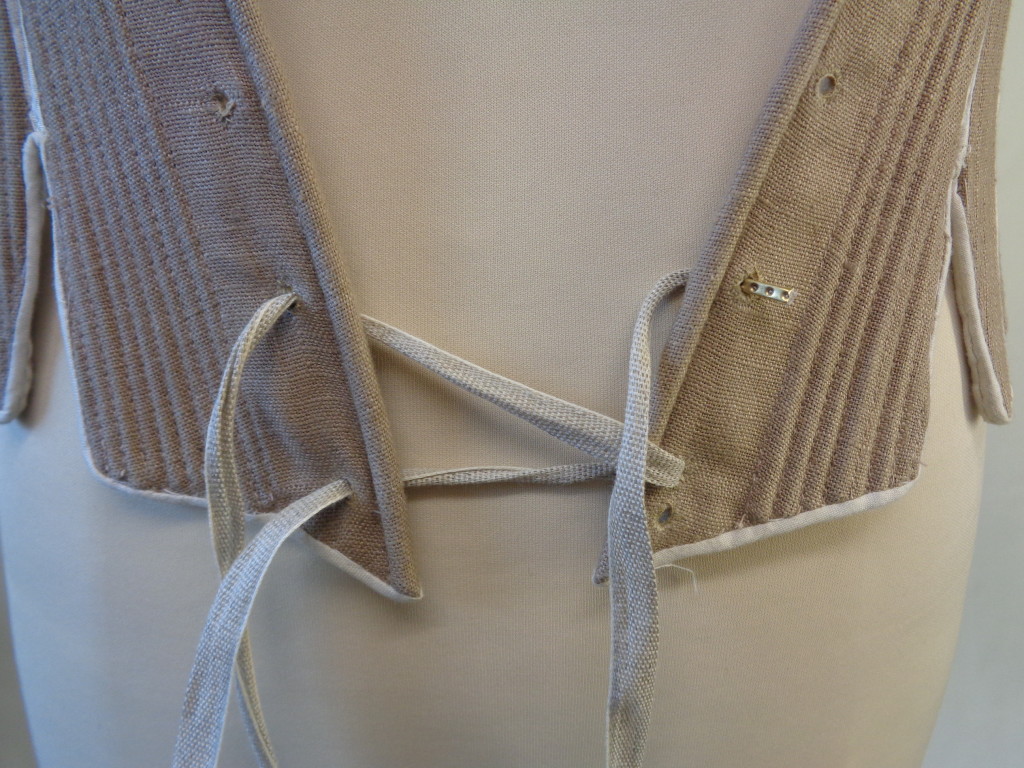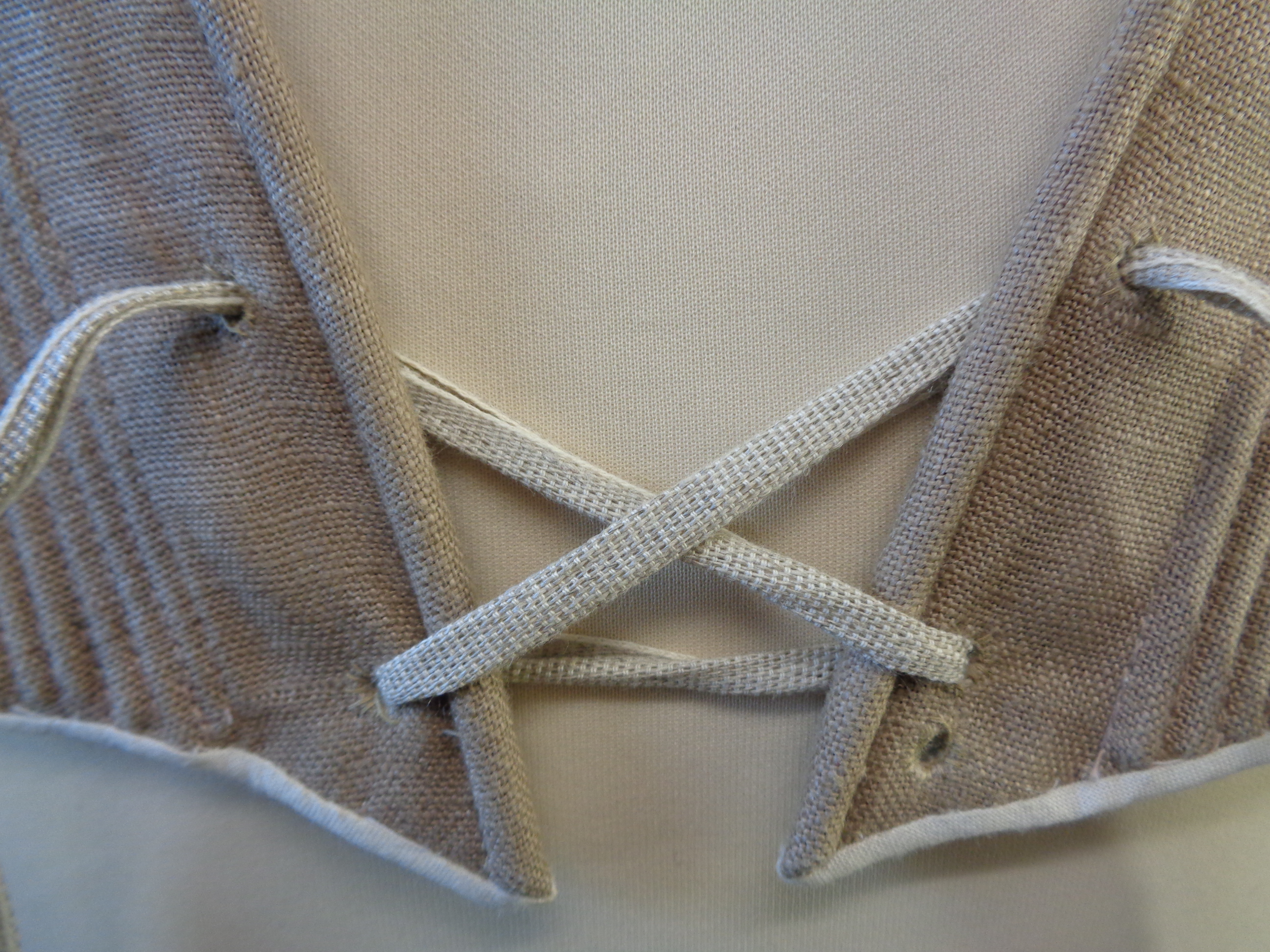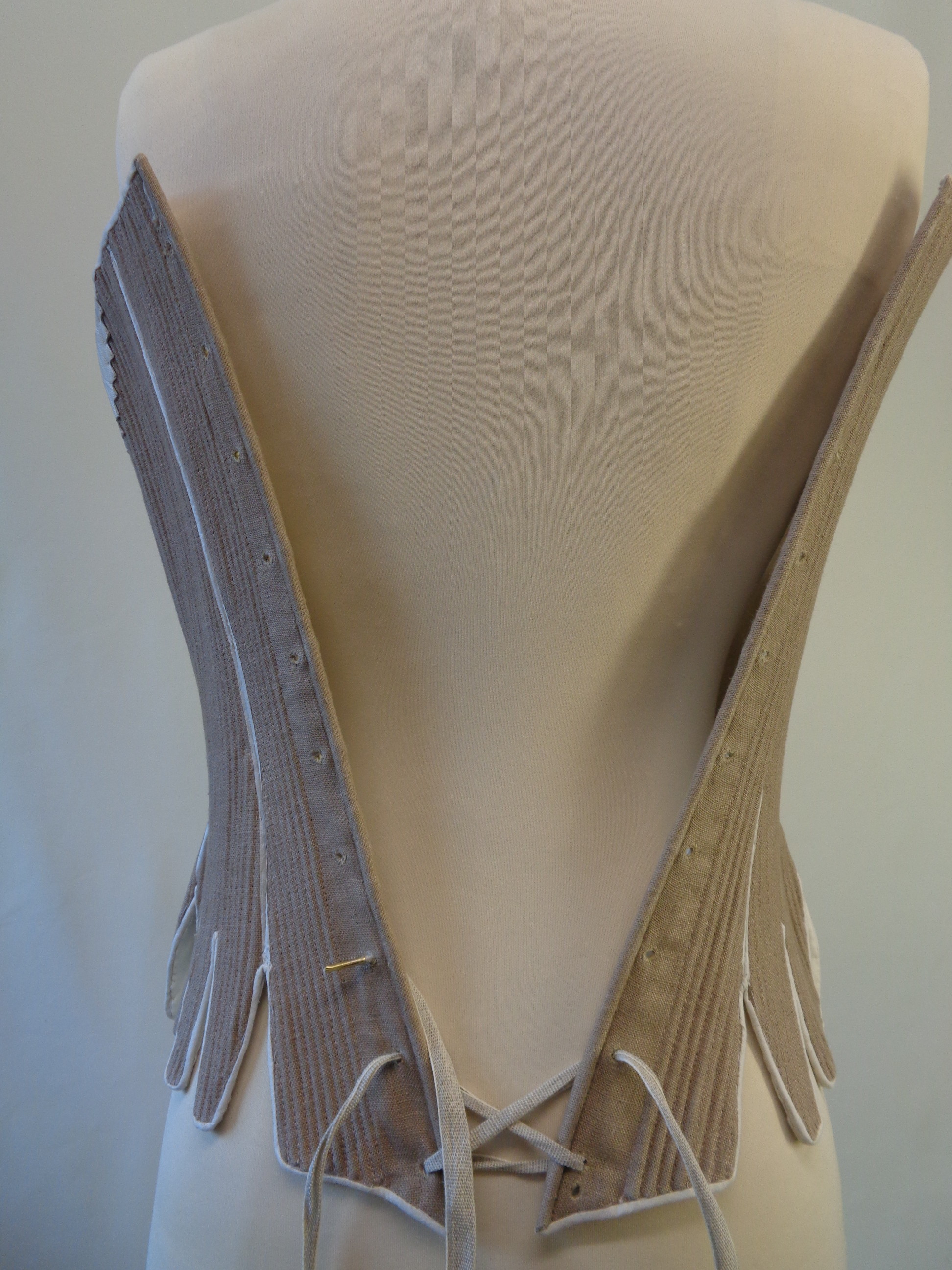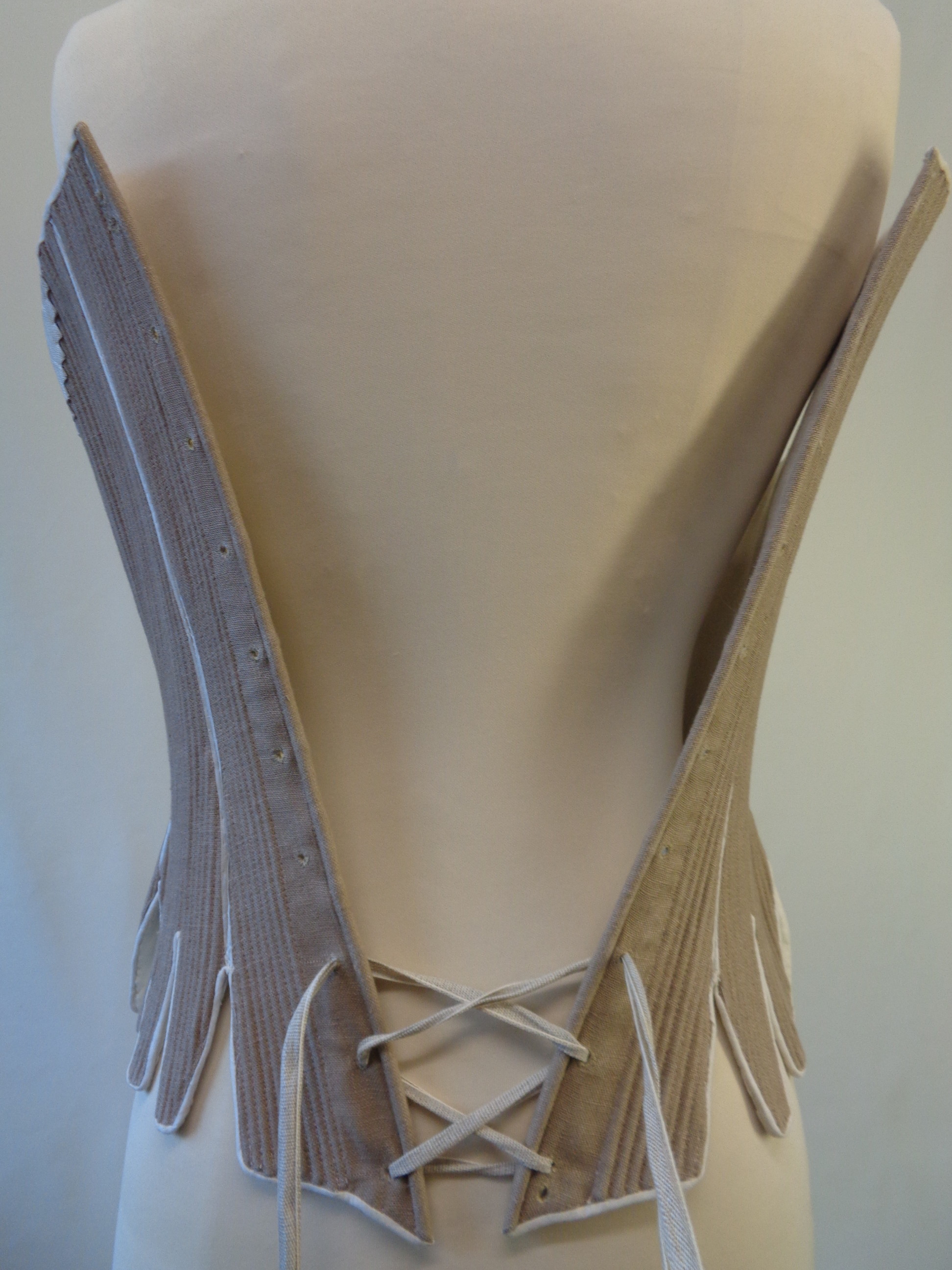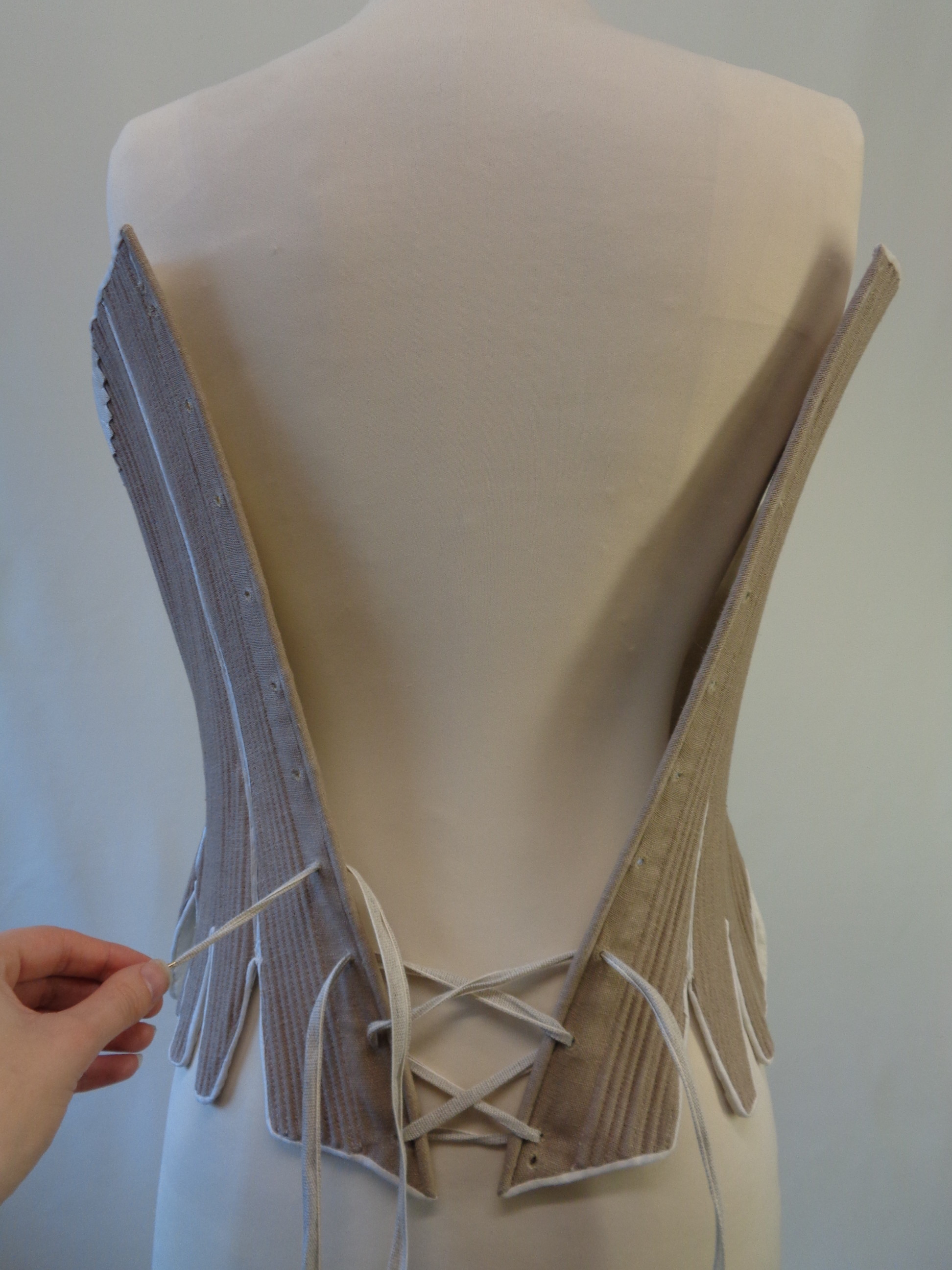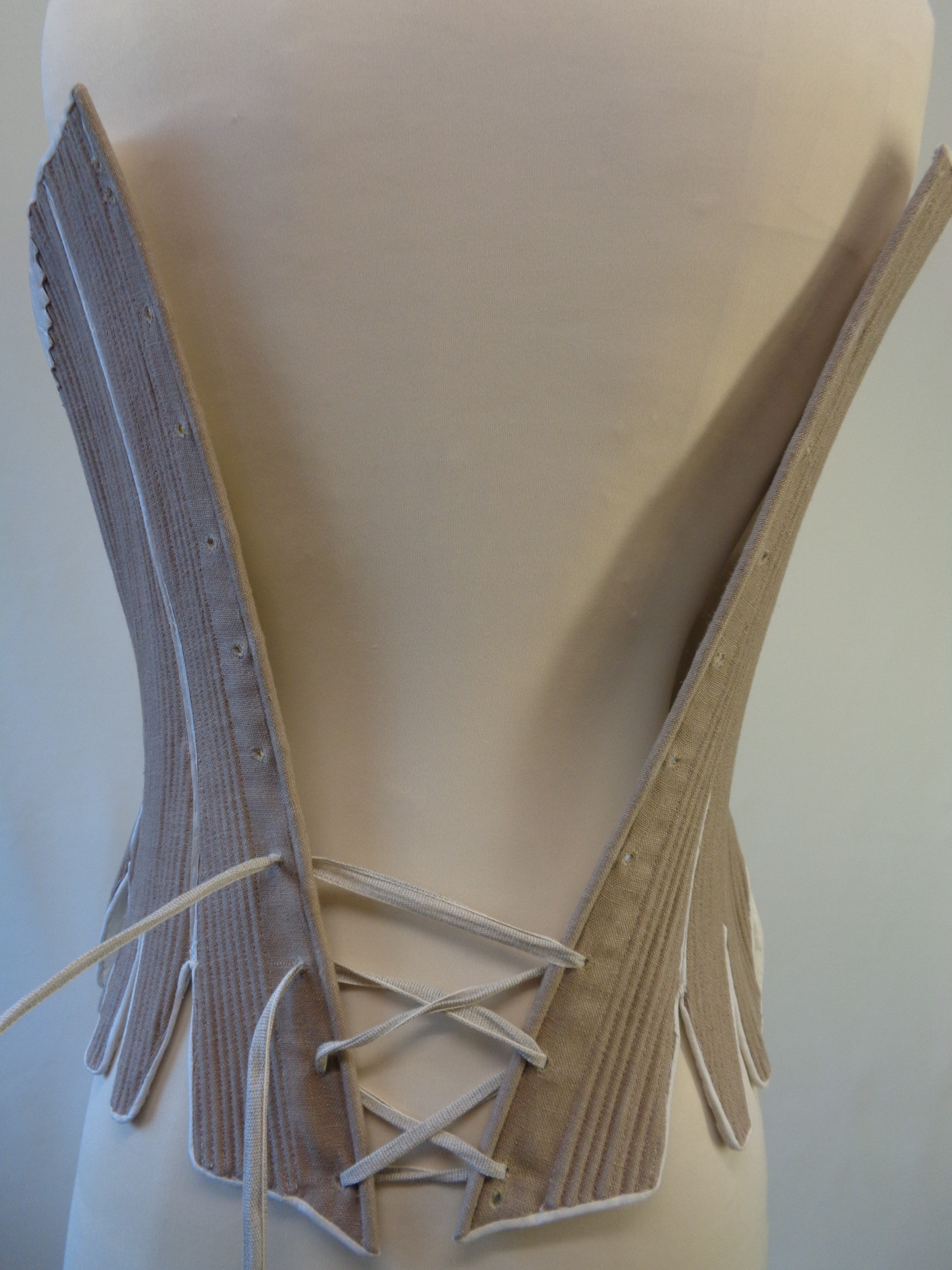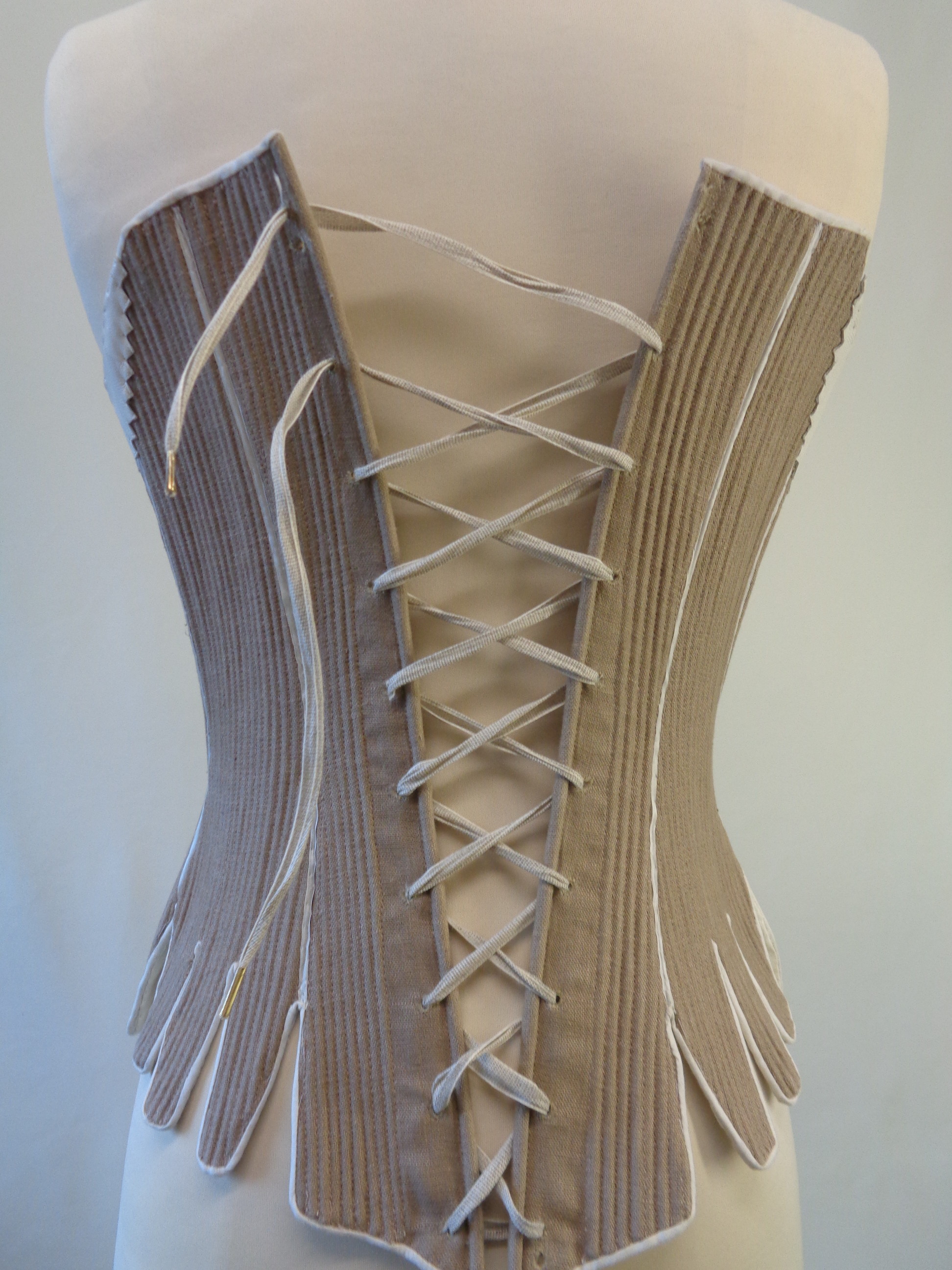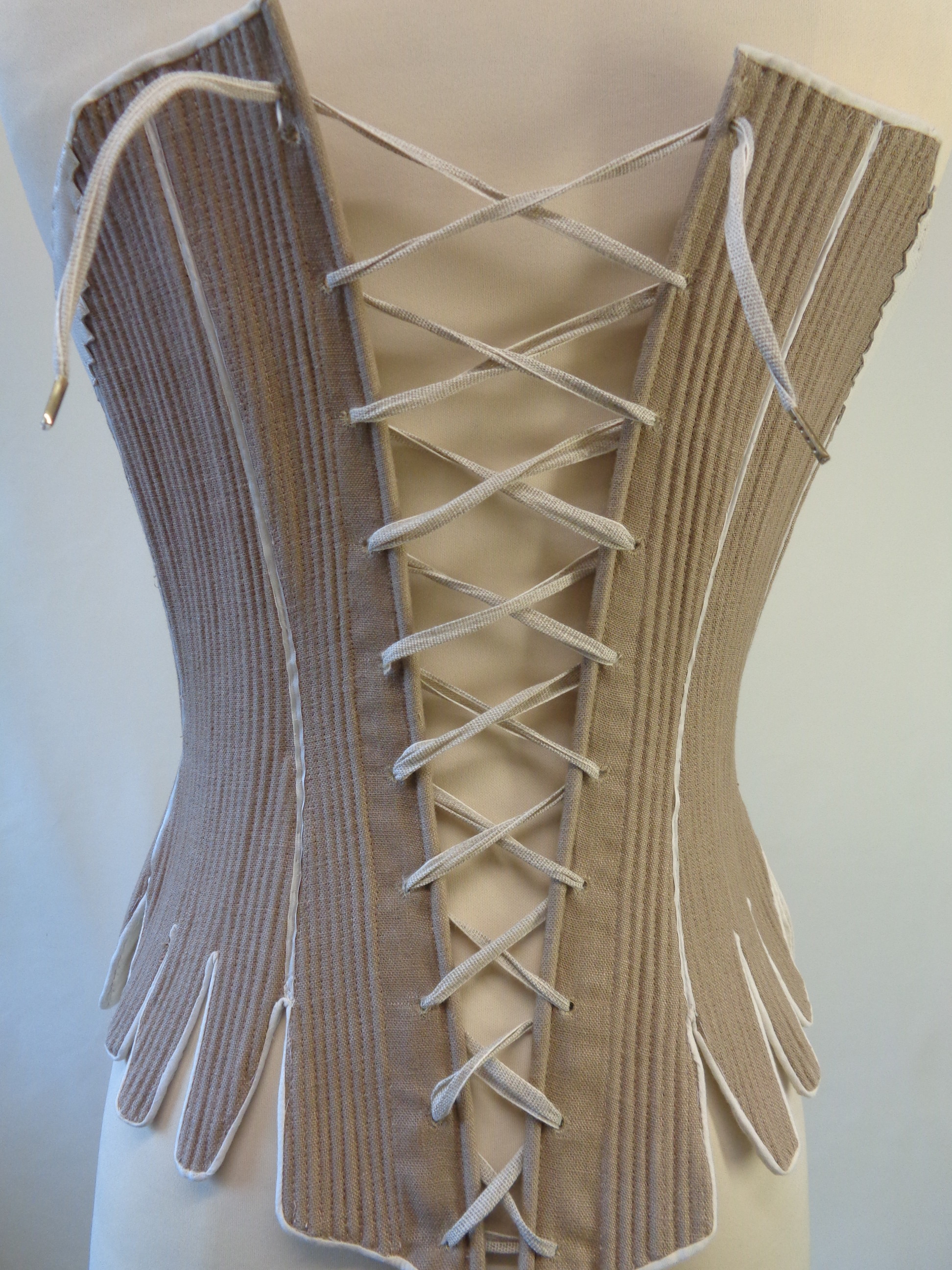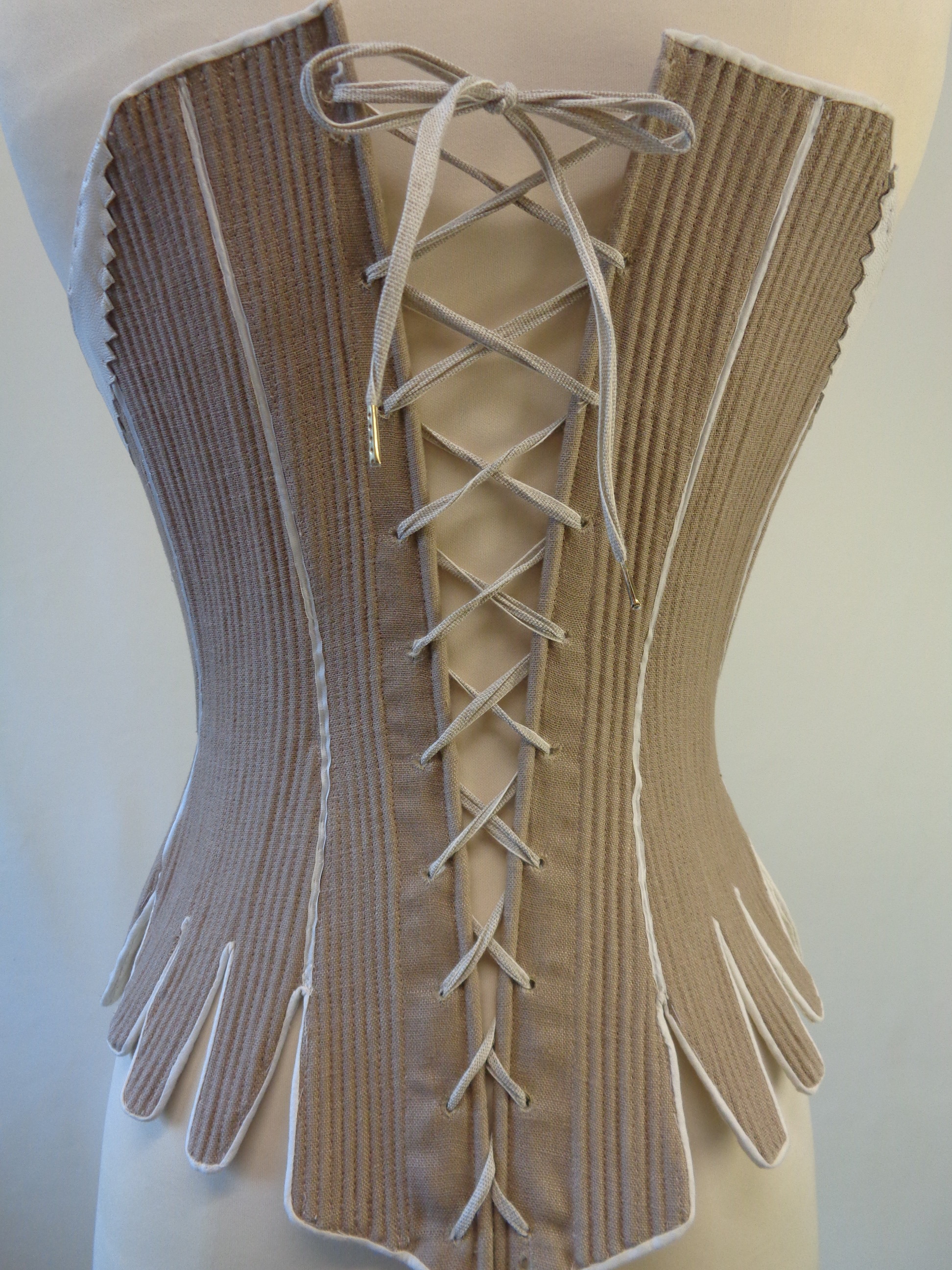Crossed Lacing
The Essential ‘How to..’
Though this lacing seems to have been more linked to Victorian corsets that utilised the ‘Rabbit Ear’ method, it is still  a lacing method that could be used in the 18th c. Interestingly it seems to have been reserved for CF dress lacing over Stomachers and such, rather than for Stays but it’s unclear as to why this is. It does seem that there is something predominantly useful about Straight Lacing that our ancestors knew about, which has gone a little over our heads as we look back trying to understand. How do we know this? Crossed Lacing doesn’t need staggered eyelets. Infact, it rather essentially needs good opposite eyelets to be able to start lacing up for an even effect – rather the opposite to the staggered start. Most of the corsets we’ve studied from the 18thc had a staggered beginning and a staggered end. (Please see our Straight Lacing Page for more info)
a lacing method that could be used in the 18th c. Interestingly it seems to have been reserved for CF dress lacing over Stomachers and such, rather than for Stays but it’s unclear as to why this is. It does seem that there is something predominantly useful about Straight Lacing that our ancestors knew about, which has gone a little over our heads as we look back trying to understand. How do we know this? Crossed Lacing doesn’t need staggered eyelets. Infact, it rather essentially needs good opposite eyelets to be able to start lacing up for an even effect – rather the opposite to the staggered start. Most of the corsets we’ve studied from the 18thc had a staggered beginning and a staggered end. (Please see our Straight Lacing Page for more info)
However, there is a stunning pair of Stays dated c.1750-75 which is a CF opening and u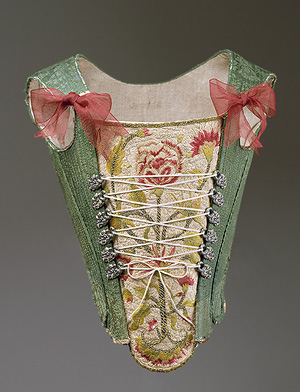 ses the Crossed Method to lace up and also as partial decoration. You can see it here to the Right here.
ses the Crossed Method to lace up and also as partial decoration. You can see it here to the Right here.
There is also a green Covered Stays (ie as part of a gown) that seems to have a mock Stomacher section over which is laced a decorative Crossed Lacing. As ‘Mocked’ as it looks, it must’ve been partly functional as there is no other way into the Stays otherwise! We have an image of this to your left.
It seems to be an interesting consistency that Crossed Lacing gets used for frontal decoration, not just on Stays, but on dresses also and that it seems to come up a lot as a CF lacing option rather than a Back Lacing option. We’re sure there is a reason for this. We just haven’t figured it out yet lol!
Anyhow, lets go onto the ‘How to…’
The Steps:
- To Start off you will need a long piece of ribbon. Depending on the gap you are desiring and how long your eyelet section is, will change the length of ribbon you will need. For a Crossed Lacing method we tend to use a piece about 2mts to 3mts. Both ends will need to be Tipped for ease or you can use an awl to help work the non-covered ends through the holes.
- Take your ribbon and push one side of the Ribbon (from here on called the 1st Tipped End) through the bottom eyelet, come up from the under side.
- Next take your other end (from here called the 2nd Tipped End – gosh how ingenuitive are we) and push through the eyelet from the underside also, out to the topside. If you have Staggered Eyelets – use the eyelet that is evenly opposite the first eyelet on the other side – you can see this in the image below.
- Next you bring the 1st Tipped End UNDER the eyelet and bring it UP through the eyelet to the topside and pull it through.
- Next bring the 2nd Tipped End UNDER the eyelet, coming through the hole to the Topside – as seen as in the photo above.
- Pull the lacings through so that it’s not incredibly tight but that the excessive ribbon is all pulled through.
- Next step is to take the 1st Tipped End (now on the other side) and to repeat the last few steps by bringing the Tipped End UNDER the Stays and UP through eyelet, coming through to the topside from the underside.
- Next, take the 2nd Tipped End (now on the other side) and push from UNDER the eyelet through to the Topside and pull through which should create your second Cross shape.
- It’s pretty much a repeated pattern from here on -always coming up UNDER the eyelet through to the top with the lacing ends. Will put another couple of images just for extra help but we’re sure you understand it by now.
- Keep working your way up the Stays in this way until you get to the top. If you have a Staggered Eyelet section, please treat it as the same as the beginning and use the eyelet most evenly opposite the single eyelet. Take a look at the following image if you are a little confused by this.
- Your lacing should look a bit like this at the back and how it works out evenly at the top.
- This is now ready for tightening and working the stays in to how you want them. It tends to be easier to work up from the bottom and try and pull any longer lengths in a slight downward motion as you tighten. The laces can get then tied up into a bow to hold it all together.
From this you can see the general look this form of lacing creates an it’s pros and it’s cons. You can see (and have probably just felt) how awkward it is trying to get it tight if you want the CB to meet – it’s more difficult to get your fingers into lacing to make the CB meet with the Crossed Method and this may be one of the advantages of Straight Lacing.
We hope you have found this helpful!


